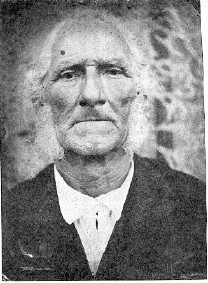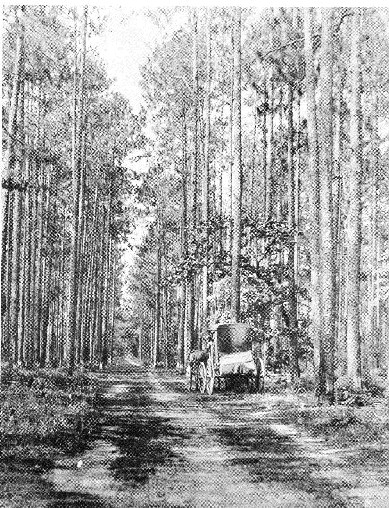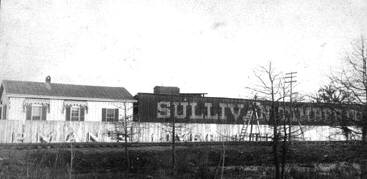 Photo History - Page 1 of 4
How "Williams Station"
was Named
Photo History - Page 1 of 4
How "Williams Station"
was Named
Excerpt from the Tri-City Ledger
August 12, 1999
by Anne Anderson
|
William Larkin Williams, known as "Uncle Bud," was
born in February 18, 1807 in Bullock County, Georgia and moved
to Escambia County, Florida in 1819. He died July 8, 1900, in
McDavid, Florida at the age of 93 years, 4 months and 20 days.
He's buried in Coon Hill Cemetery in Sants Rosa County, Florida
near Chumuckla Springs.
On either side of him are buried two of his three wives, Margaret
and Mary McMillan, both daughters of Mary (Polly) Wilkinson McMillan
and Duncan McMillan. He married Margaret McMillan on March 5,
1829 in Santa Rosa County, Florida.After Margaret died, he married
her sister, Mary.
Upon Mary's death June 28,1887, Williams married (third) Fannie
Bellah on May 4, 1889, who was born February 8, 1846. A little
math shows he was 82 years old and Fannie was 43.
When Williams moved to Escambia County, Florida to live in
1819, he lived at a place known in recent years as Reuben Herman
Place in Walnut Hill, 2 1/2 miles west of McDavid Station. Williams
would ride his pony from Walnut Hill to the railroad [to the
north], presumably to get supplies, tie the pony to a tree and
then flag down the train [to go to Mobile or Montgomery]. He'd
catch the next train back. |

William Larkin Williams |
This particular tree became known as "Williams Station,"
and its locality is now known as Atmore, Alabama. Family folklore
states that he eventually built a little shelter to house his
horse while he was gone, but no one knows for sure.
Photo History
|
The photograph at right was taken from a publication entitled
"Heritage 76: A Historical Review of Escambia County and
its Communities."
The picture carries the title “Site of Fanny Oil Field.”
The text beneath the picture reads, “During thirty years
of his work as state geologist from 1873 to 1927, Dr.
Eugene Allen Smith used the mule-drawn Studebaker buggy shown
above in his trips across the state to make geological surveys.
The vehicle is now on the second floor of Smith Hall, named in
honor of Dr. Smith, at the University of Alabama.
"When Dr. Smith stopped to make this picture of the
pine timber and of his son seated in the buggy, he did not know
that he was standing on the spot where the Fanny Oil Field would
be discovered in 1974. The picture exemplifies the ever changing
course of history.”
Frances Robb, who was recently a speaker for an ECHS meeting,
sent information about this picture, as well as notes about the
area which Dr. Smith made in his notebooks. Robb pointed out
that the original of this photograph is labeled CSA/Smith inventory
4-00199, Avenue in Pines, south of Brewton, dated August 6, 1904.
The original photographs are part of a collection at the University
of Alabama, Tuscaloosa. |

Title: "Site of Fanny Oil Field" |
 |
|
Center New Grove School
The school was located between Brewton and Castleberry along
Highway 31. It was built around 1918. The building also served
as a meeting place for members of the Center New Grove Church.
A church building was constructed about 1940. |
Sullivan Timer Company, Ca. 1898
(Photo courtesy Mr. Sanford)
Located in the southwestern corner of Escambia County,
Alabama, at Wilson Switch (now Nokomis), the Sullivan Timber
Company was begun by two Sullivan brothers of Pensacola. One,
Martin, eventually parlayed his timber holdings in Escambia County,
Alabama, to help form the Alger-Sullivan Lumber Company of Century,
Florida . |
|
 |
Return to
ESCOHIS Home Page Go
to Page 2 |




